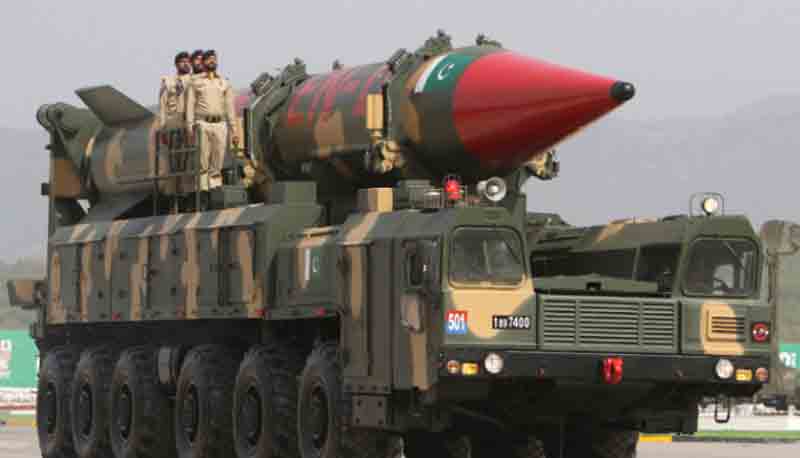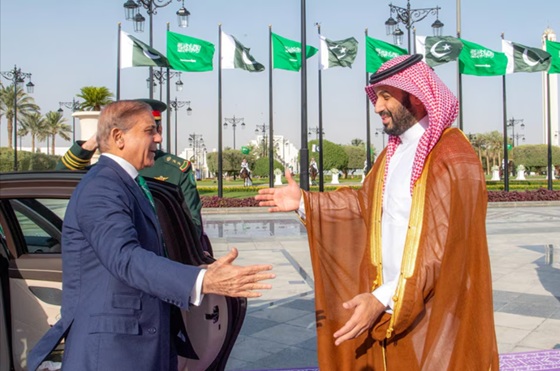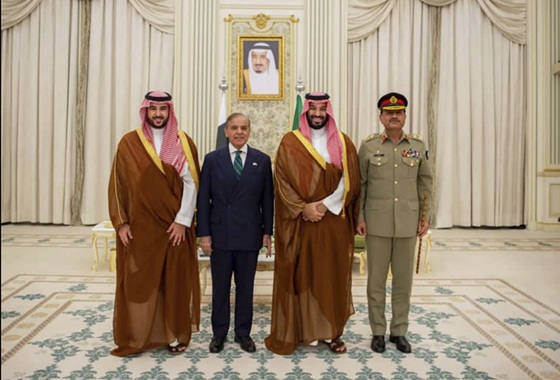Imagine a world where Pakistan, a nuclear-armed nation long focused on its rivalry with India, extends its nuclear shield to Saudi Arabia, reshaping the Middle East’s volatile power dynamics. This hypothetical shift in Pakistan’s nuclear doctrine—prompted by recent geopolitical tremors like Israel’s 2025 strike on Qatar—would mark a seismic pivot, blending South Asian and Gulf security in an unprecedented “Muslim NATO.” While Pakistan’s official doctrine remains India-centric, recent statements from Defense Minister Khawaja Asif and the September 17, 2025, Strategic Mutual Defense Agreement with Riyadh hint at such a possibility. What would happen if Pakistan formally offered Saudi Arabia a nuclear umbrella, guaranteeing retaliation against existential threats? The implications are profound, risky, and far-reaching.
What Is a Nuclear Umbrella?
A nuclear umbrella is a strategic assurance where a nuclear-armed state pledges to use its arsenal to protect an ally from existential attacks, nuclear or otherwise. For Pakistan, this would mean reorienting part of its 170 warheads—currently aimed at deterring India’s conventional edge—to cover Saudi Arabia against threats like Israel’s nuclear arsenal or Iran’s near-breakout capabilities. This isn’t outright weapon-sharing but a doctrinal shift, potentially involving joint targeting or forward deployment, formalized by the 2025 pact treating attacks on one as attacks on both.
Why Now? The Trigger of 2025
The catalyst lies in the Middle East’s escalating tensions. Israel’s strike on Qatar exposed vulnerabilities in U.S.-backed defenses, shaking Saudi confidence in American guarantees. Saudi Arabia, a longtime financial backer of Pakistan, has sought deeper security ties, with Crown Prince Mohammed bin Salman hinting at alternative nuclear options since 2023. Pakistan’s Army Chief Asim Munir’s presence at the Riyadh pact signing, coupled with Asif’s remarks about “capabilities” for Saudi defense, signals openness to an umbrella. This move aims to deter Israel, counter Iran, and secure Saudi funding amid Pakistan’s economic woes.
Immediate Implications: A New Deterrence Calculus
1. Bolstering Saudi Security: Pakistan’s Shaheen missiles could theoretically reach Tel Aviv, plugging Saudi Arabia’s “deterrence deficit” against Israel’s 90 warheads. This emboldens Riyadh against regional threats like Yemen’s Houthis or Iran’s proxies, but stretches Pakistan’s limited arsenal across two theaters—India and the Gulf.
2. Escalation Risks: Israel, labeling this “existential,” might preemptively target Pakistani assets via cyber or sabotage. Iran, feeling encircled, could accelerate its nuclear program, sparking an arms race. Gulf states like the UAE or Bahrain might seek similar pacts, fragmenting regional unity.
3. Economic Shockwaves: Oil markets, already jittery post-Qatar strike (Brent crude spiked 4%), could see sustained volatility, with prices potentially rising $10-15 per barrel if tensions flare. Safe-haven assets like gold and the yen would rally, while Pakistan’s rupee might stabilize with Saudi cash inflows.
Global Repercussions: A Fragile Nuclear Order
This doctrinal shift would ripple beyond the Middle East, challenging global stability:
– U.S. and NATO: Washington, dismissing the move as “speculative,” would likely impose sanctions and bolster intelligence-sharing with Israel. The Trump administration might push arms control to contain fallout.
– India’s Alarm: New Delhi, viewing this as a two-front threat, would accelerate its Agni-VI missile (10,000+ km range) to cover the Gulf, straining Saudi-India trade ties. The QUAD (U.S., India, Japan, Australia) would tighten as a counterweight.
– China and Russia’s Gain: Beijing, a Pakistani ally, might back a Saudi nuclear program via Islamabad, while Moscow would leverage the shift to weaken U.S. influence. This strengthens a China-Pakistan-Saudi axis, reshaping global alignments.
– Non-Proliferation Erosion: The umbrella violates the NPT’s spirit, inviting IAEA scrutiny. It mirrors Russia’s 2024 doctrine lowering nuclear thresholds, pushing the Doomsday Clock closer to midnight (already at 90 seconds in 2025).
Long-Term Risks: Overreach and Instability
For Pakistan, extending a nuclear umbrella is a high-stakes gamble. Its small arsenal struggles to credibly deter both India and Middle Eastern foes, risking overstretch and domestic backlash over “exporting” deterrence. Saudi Arabia gains autonomy from the U.S., advancing MBS’s vision of a “strong Saudi,” but invites Israeli retaliation and destabilizes the Abraham Accords. Globally, the move fuels a tripolar nuclear dynamic—U.S., China, Russia—while encouraging copycat doctrines in states like Iran or Turkey.
The Credibility Question
Experts at the Belfer Center argue that doctrinal shifts alone don’t “convert” deterrence into action; ambiguity is the real weapon. Pakistan’s umbrella would signal resolve but lack credibility without retargeting or deployment—steps that invite U.S. intervention. As CSIS notes, the 2025 pact prioritizes psychological coercion over operational reality, deterring some escalations (e.g., Israel hesitating) but not all (e.g., Iran’s defiance).
What’s Next?
If Pakistan formalizes this umbrella, expect U.S.-led diplomacy to cap escalation, alongside IAEA inspections to ensure no physical transfers. Markets will remain volatile, and India’s response could reshape South Asian security.
Discover more from Defence Talks | Defense News Hub, Military Updates, Security Insights
Subscribe to get the latest posts sent to your email.





